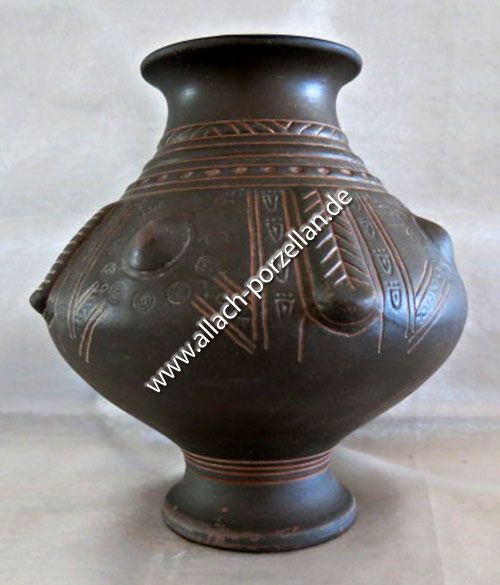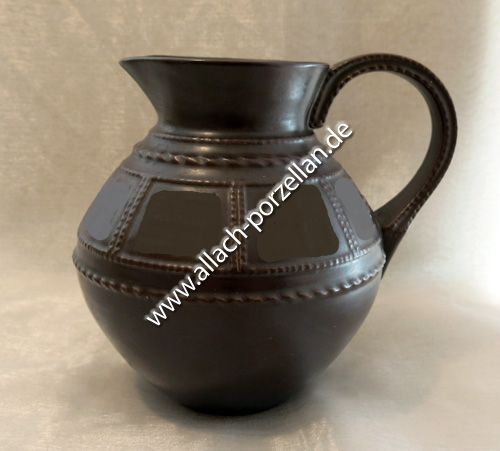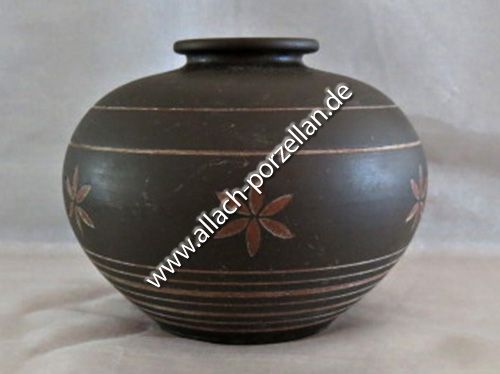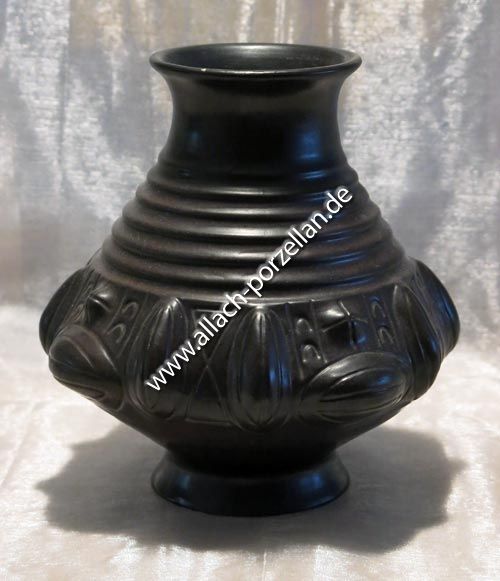Germanic motifs
Starting from the roots of German origin, the use of Germanic symbols in ceramic formations was widespread, but did not spread from generation to generation. Within the SS, the Ahnenerbe organization was responsible for the term Germanic research. There, the strenuous research into Germanic symbols was passed on to the Allach porcelain manufacturer, which was to create ancient examples of engraving and rune symbols in ceramic models. The Hanover State Museum in Northern Germany, for example, shows antique exhibitions of Germanic ceramic models of the swastika jug model No. K20, the embossing urn No. K7, the urn No. K1 and the ball vase No. K503, from which Allach Porcelain made perfect copies. The Germanic symbolism was transferred both on exclusive pieces by the porcelain manufacturer Allach, such as the large vase model No. K5, and on ceramic products for everyday life, such as the small pot model No. K3 and the bowl model No. K6.









